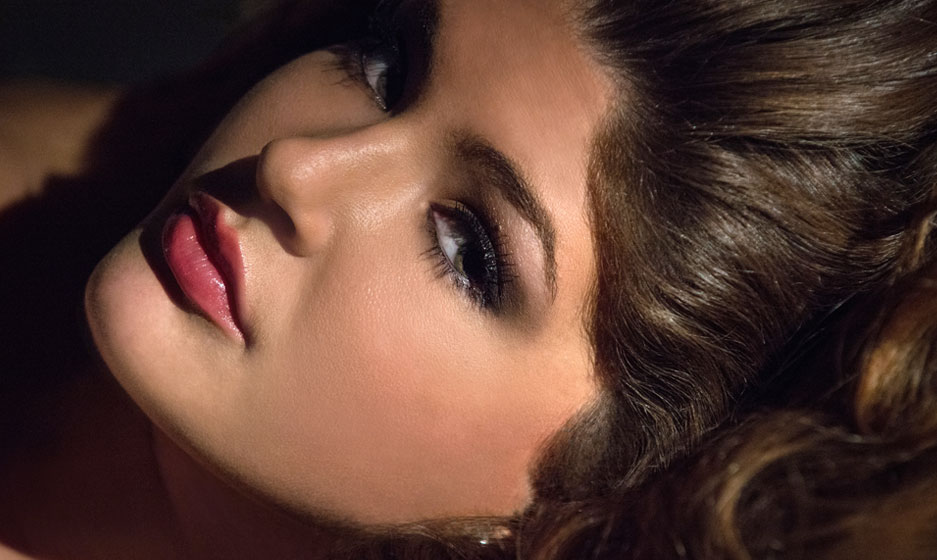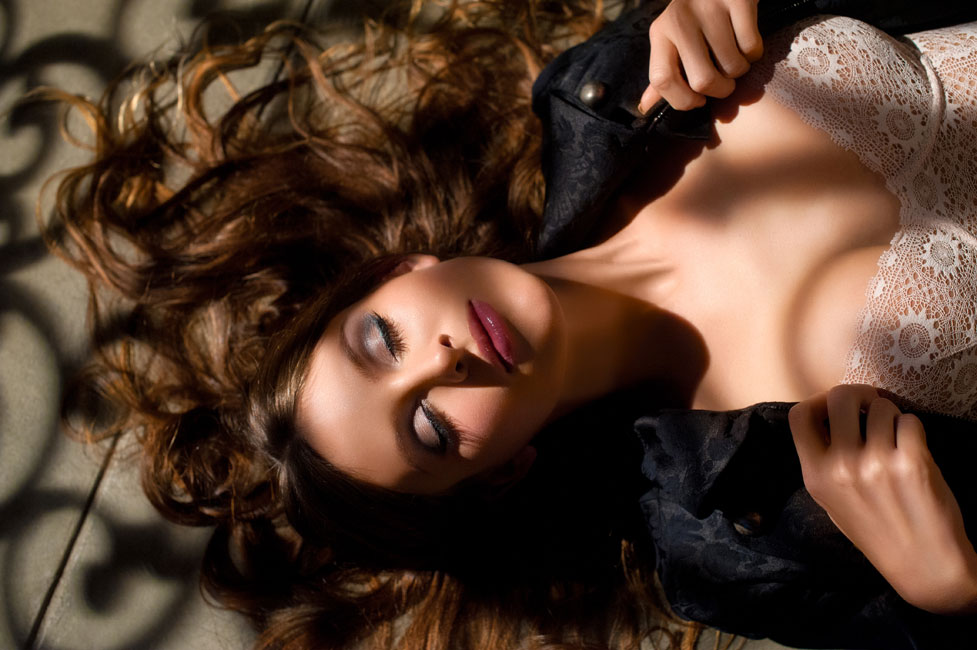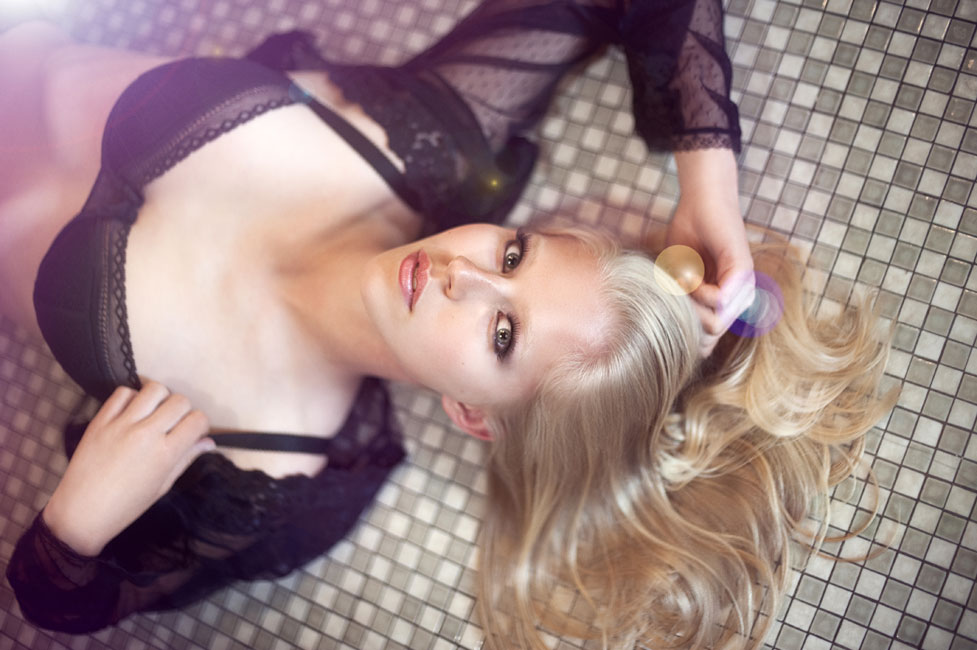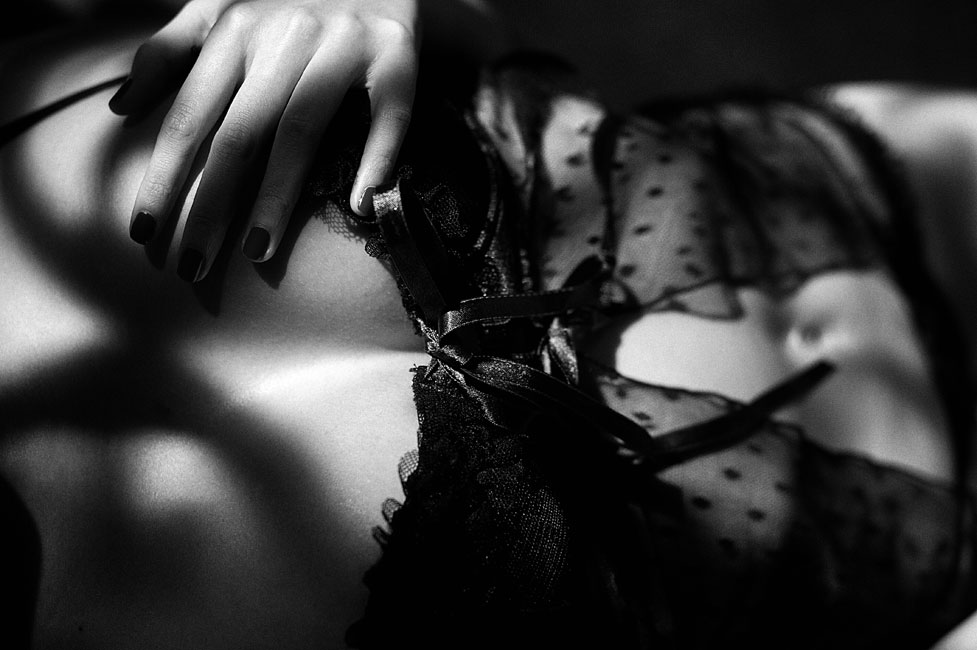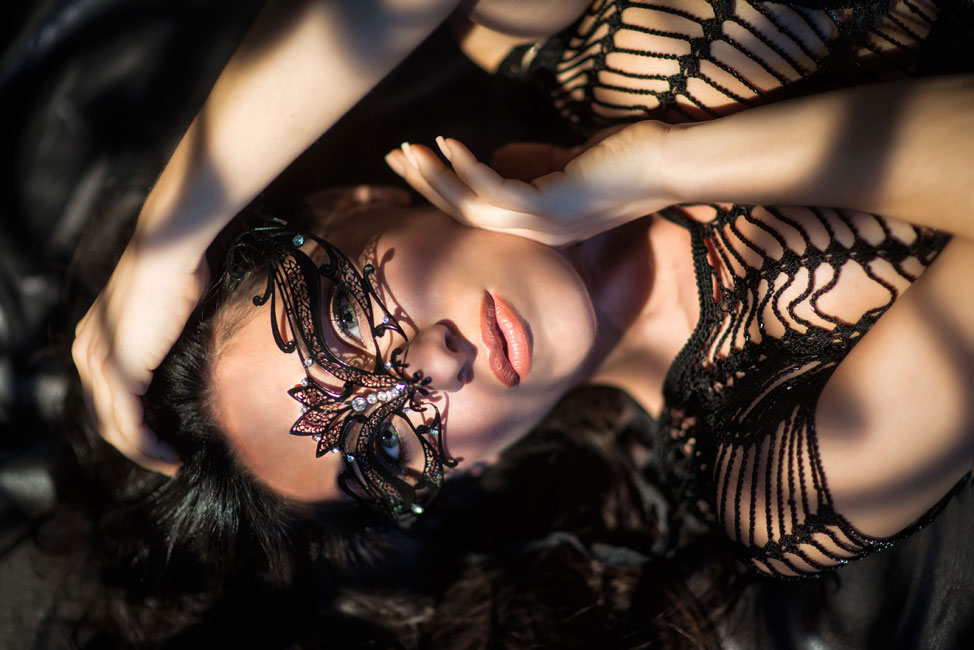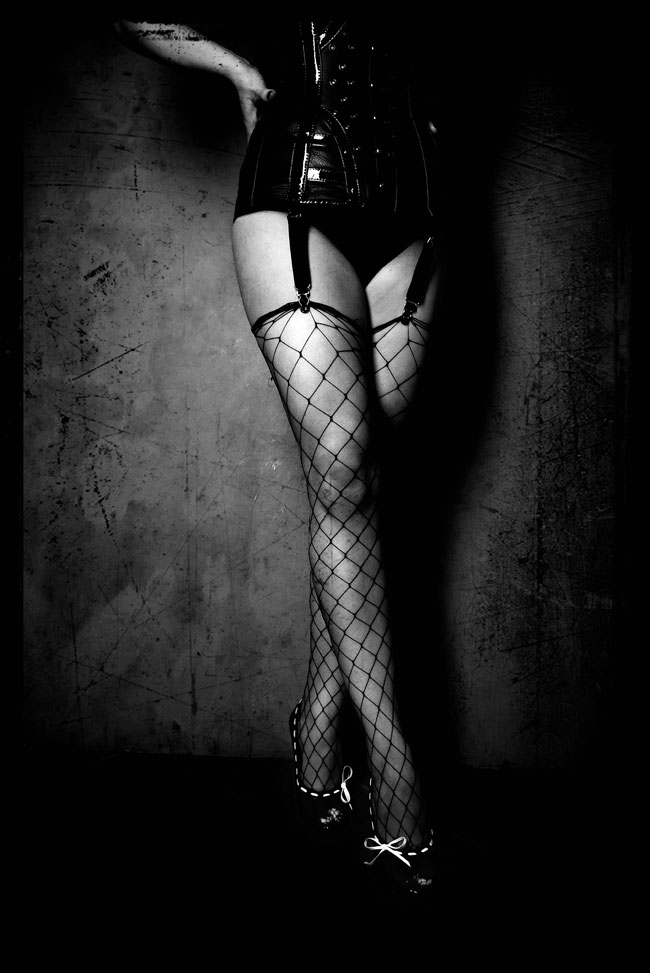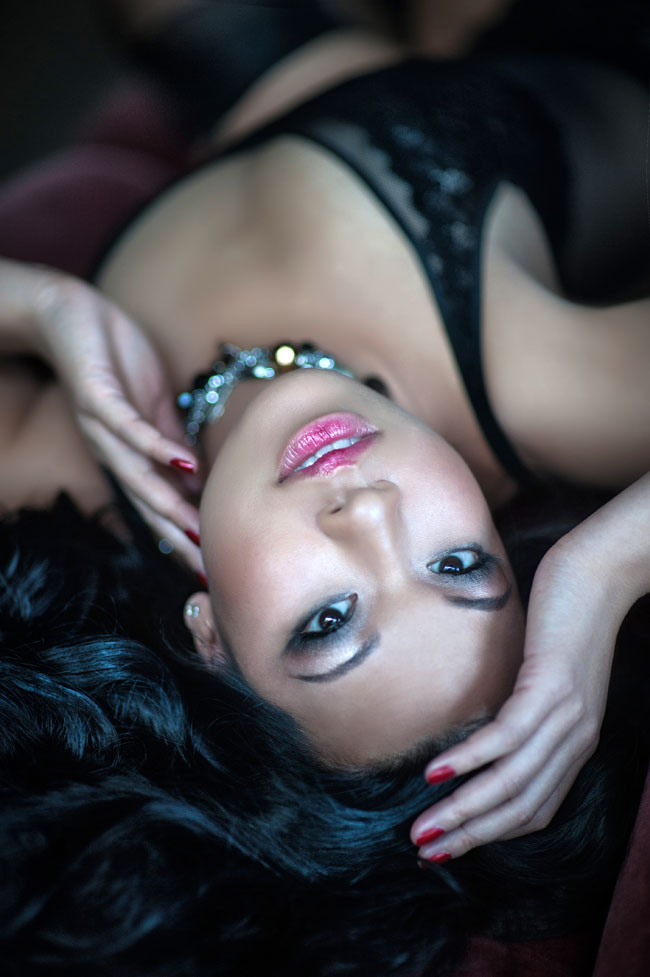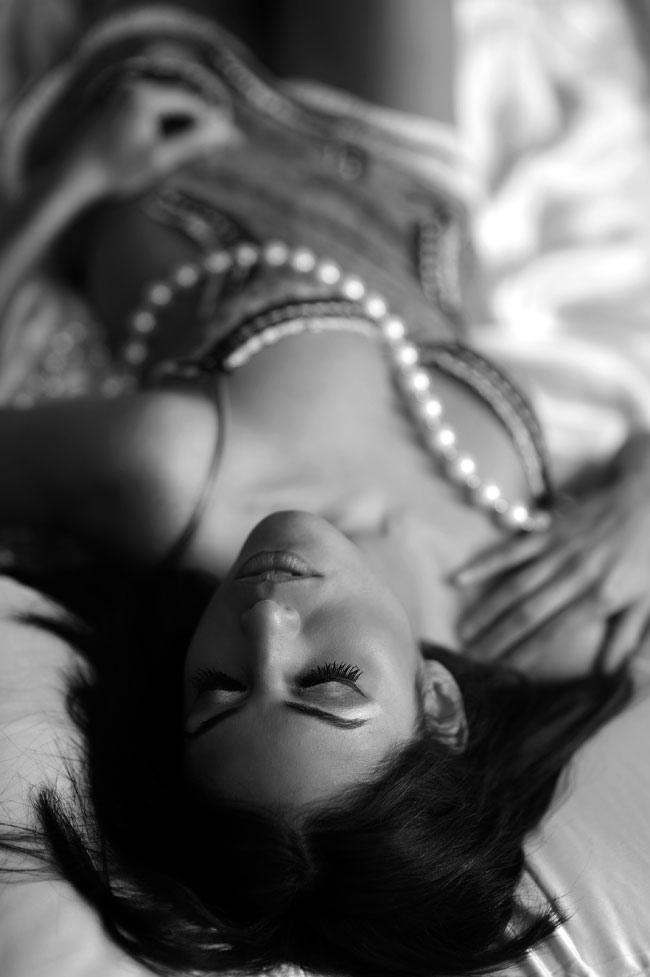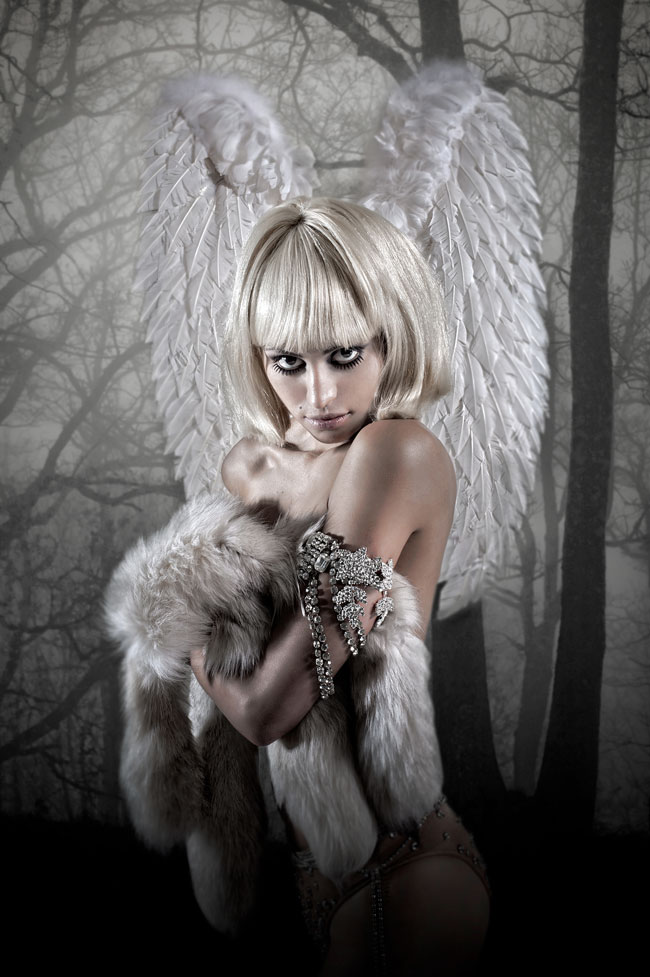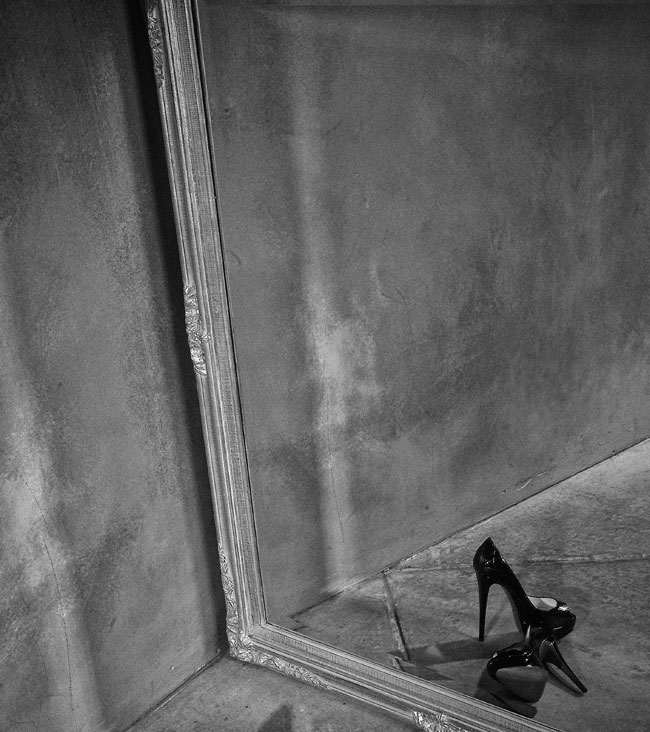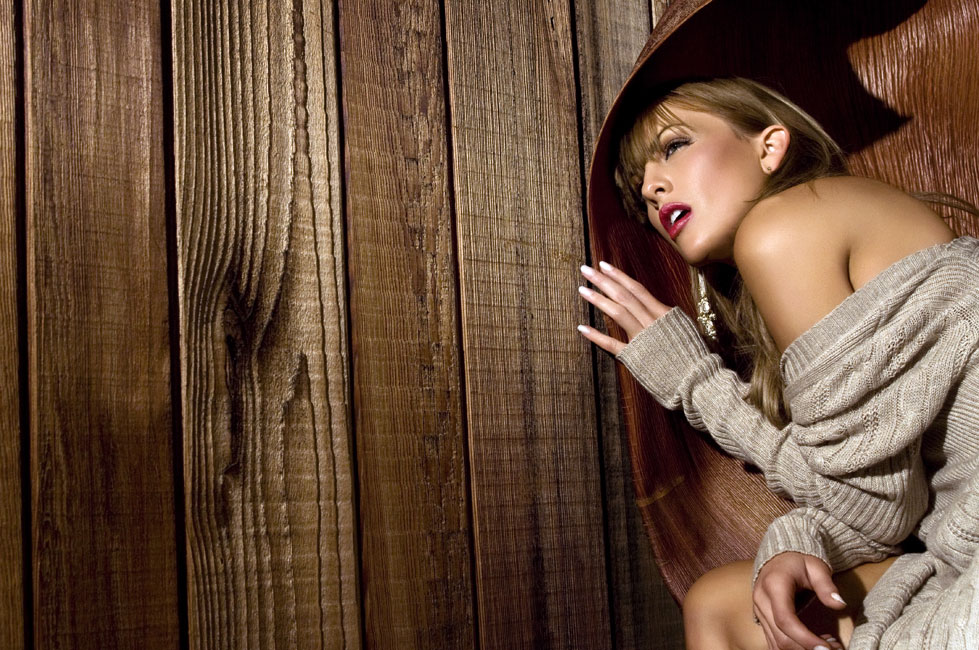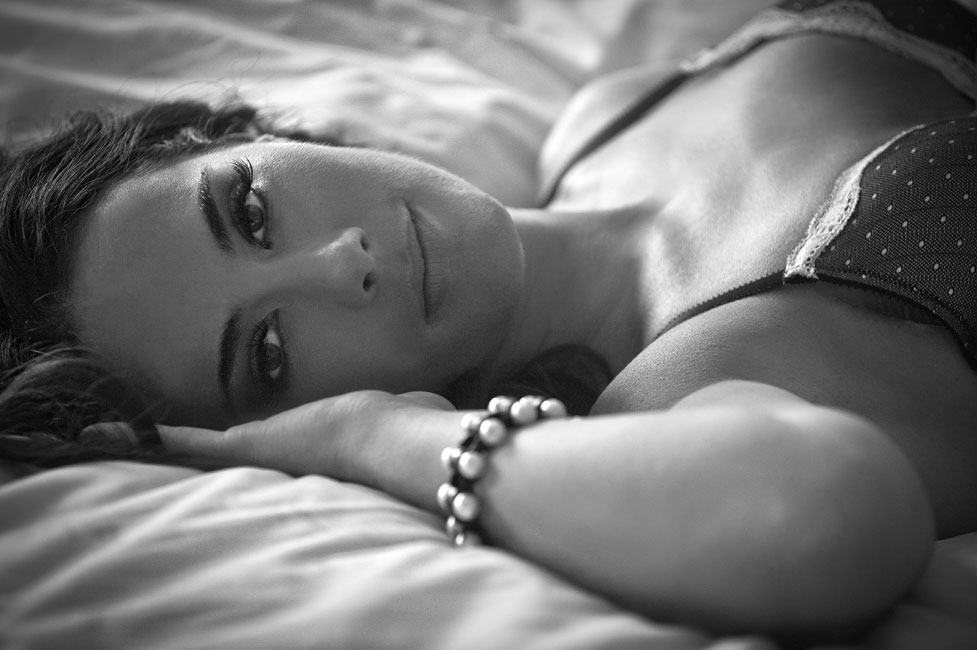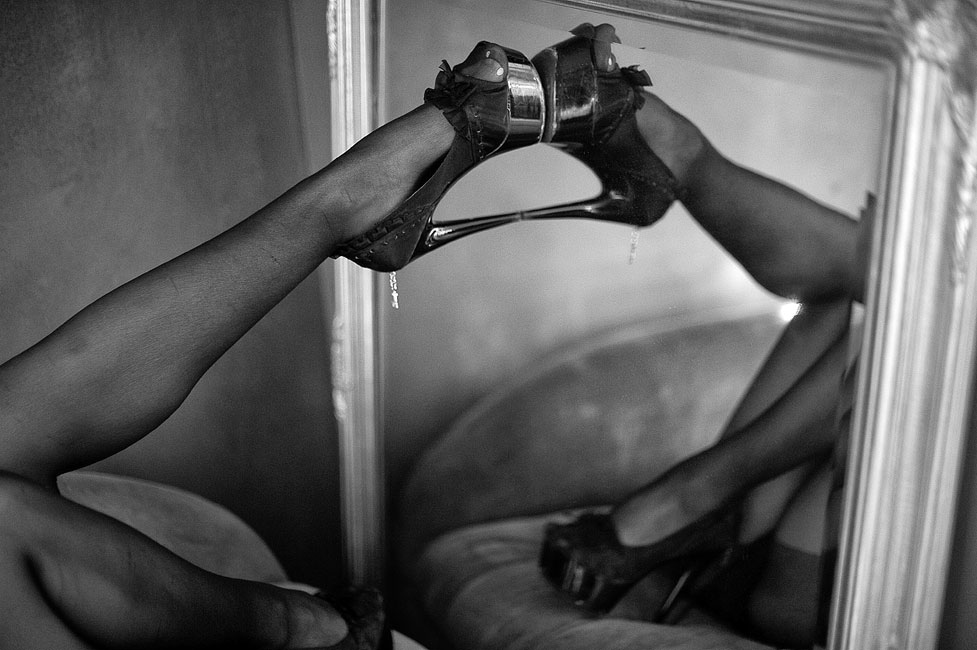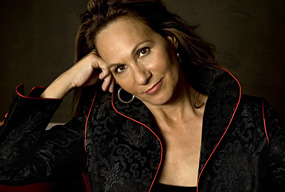Boudoir Photography: Creating the Sensual Image
Creating the intimate images of boudoir photography is not for the faint of effort. The best professional practitioners employ extensive planning and preparation and sophisticated imaging techniques. Hair and makeup artists frequently appear; so do stylists and retouchers. It's a field of photography that demands skill, sensitivity and a soupçon of psychology.
We spoke recently with two boudoir photographers who exemplify all of the above: Cherie Steinberg and Hedley Jones, who comprise team CherieFoto.
"We first offered boudoir as an extended buy with our wedding photography," Cherie says. They soon realized from boudoir's popularity that it could be a successful standalone business. An added incentive was the fact that they found boudoir sessions were quicker and easier to do than weddings, and for the most part, they were more fun. They created a separate website, The Boudoir Café, and found themselves at the leading edge of a developing trend. "We think we got into it a little ahead of the pack," Cherie says. "There's been a big increase in the past two years of wedding photographers adding the word 'boudoir' to their services list."
They ascribe the popularity of boudoir photography in part to changes in the way people feel about expressing themselves and their sensuality. Call it the "shades of grey" effect: "There's a lot more freedom in the way people feel about expressing themselves, in being interested in sensuality," Cherie says. "We definitely see it in our business—women of all cultures who may be inhibited but don't want to be; they want to have an experience that takes them out of that."
The Mirror Image
Their success with boudoir photography starts with a shrewd appraisal of their clients. "Our studio is full of mirrors," Cherie says, "and you can tell how a woman feels about herself by the way she looks at herself. You can tell which woman loves herself, and which woman doesn't, and the best women to shoot are the ones who love themselves." Cherie finds, though, that most don't. "I'd guess that more than half of women are not comfortable or happy with something about their appearance."
There's a lot of emotion in a boudoir shoot because the photography is so inextricably linked to the subject's self-image. Because of that, Cherie and Hedley go at the shoot from the positive side. "First I find out what part of themselves they love," Cherie says. Dealing with those positive aspects and working around any negative ones dictates how the photographs will be composed and lit. "There's lighting to reveal, lighting to emphasize and lighting to obscure or eliminate," Hedley says.
Most often their subject ends a session with not just an image, but an improved self-image. "We seem to have a knack for working with our subjects," Cherie says. "When they leave this studio they feel that they're worth a million dollars. We've given them so much attention that they feel amazing. It's a whole psychological thing. When we started taking boudoir pictures, we were thinking, okay, we're photographers and we're all about making great pictures; the psychology part of it was something that we didn't think about. Fortunately, very early on we recognized that not only were we doing great photographs, we were also making these women feel great about themselves and their self-esteem." Hedley adds, "The attitude is that for the next two hours you're living this fantasy, that all the things that were worrying you before you walked through the door, well, you don't have to worry about them now."
To be able to pay that kind of attention and create that kind of atmosphere, they have to have all the support elements in place. Their subjects select their own outfits and generally have their hair done before the shoot. "Women's hair is a big deal," Cherie says, "so unless they specifically ask for hair, I tell them, 'Get your hair done the way you like and then come in, and we might tweak it a little bit.' But we always have a makeup person. We do not want to shoot anybody without makeup."
How much direction they give depends first on the subject, then on what ideas Cherie, Hedley or the subject might come up with along the way. "The girl who loves herself, she gets in front of the camera and she's like, ‘I can do this,’" Cherie says. "Then there are other girls where we're saying, 'Can you move that pinky finger to the left?'"
The women who are less than perfect are posed and lit to flatter. "The whole idea of the picture is that they feel good about themselves," Cherie says. "And the other thing is, let's face it, we're shooting to sell, so we cut them up a lot—shoot sections of their bodies, a stomach, a hand, a leg—so that these pictures can be made into art pieces that can go over their beds or in their living rooms." Cherie and Hedley have a set of poses for subjects who may be uncomfortable, poses they can easily go into. The photographers will take care of the rest with cropping and lighting.
Then there's retouching. "Everybody in the world gets retouched these days," Cherie says. "Our retouching is extremely natural, but if a woman doesn't like her thigh, she'll say, 'Can you shave it down a little bit?' And it's no problem, we can definitely do that for her. We have our own retouching company, and we've trained all the retouchers. Our suggestions for retouching are generally very simple, like 'good skin' or sometimes 'a little bit thinner if it looks natural.' Retouching is just like hair and makeup—it's one of the important elements that goes into the whole process."
Not all shots in a boudoir session have to feature the subject. Often something with meaning to the person adds variety to the shoot. "This is a picture you can put in your living room, where you wouldn't necessarily put a picture of yourself," Cherie says. D3, AF Zoom-NIKKOR 28-105mm f/3.5-4.5D, 1/160 second, f/14, ISO 200, manual exposure, Matrix metering.
When they leave this studio they feel that they're worth a million dollars. We've given them so much attention that they feel amazing.
The process of course starts with the woman's desire for boudoir photographs. "When we were offering it as part of the wedding package, I think 80 percent of the brides wanted it as a surprise for their future husbands," Cherie says. And then there are events, birthdays, anniversaries and, quite frequently, changes in appearance: a weight loss or cosmetic surgery. "Their stories are all over the map," Cherie continues. "'My boyfriend broke up with me; I lost a hundred pounds; I got a divorce; I'm turning forty.' What we think sets us apart from others is that we come at boudoir photography not only from the aspect of beautiful pictures and stylish touches, but we realized that we'd have to become psychologists just a bit. We do interviews to find out why she's doing this, so there's an emotional connection with us when we're photographing her. The style we photograph her in is dependent on what she says to us—it gives us clues to the kind of look she wants. We want to know her perception of her strengths and weaknesses, and any hesitancies about what the pictures may reveal or emphasize. All this is up to her, not us. And we provide a high degree of comfort in the studio. We ask, 'What kind of music do you like? What kind of drink would you like?' All the attention goes to her and making her look and feel good. It's like an imaging spa."
Team Effort
Cherie and Hedley estimate that 80 percent of their boudoir photography is done in their studio, the rest in the subject's home or at a luxury hotel. They find it fun to go on location. They're resourceful and welcome the element of the unexpected, and to maintain intimate atmospheres and moods, they travel light. "We're trained in wedding photography and we can go anywhere and shoot with a light bulb," Cherie says, though it's much more likely a few SB-800 Speedlights will take care of most situations.
Because their subjects have read about them or heard about CherieFoto from friends or relatives, the fact that half the team is male is rarely an issue. "One in fifty might be a little uncomfortable at first," Cherie says, "but they come in and they meet Hedley if they haven't already and because we're setting up, by the time they get their makeup done it's okay, no problem. In the talk beforehand we've established whether Hedley is going to shoot along with me."
"Most of the time we shoot side by side," Hedley says, "and we're fighting over the lights and the shooting spot." Cherie agrees: "Yes, we fight over the best spot, but that's part of the shtick; it's like we're putting on a little show for them, and we're laughing at it all."
Ultimately it becomes the attention of two photographers, fussing over a subject, jockeying for the best position to produce a flattering photograph. It's another boost to self-image, and it goes a long way toward relaxing their subjects and getting them to join in the spirit of the shoot. "All that attention, all that fuss, it's really part of what they're paying us for—it's an experience."
What the clients eventually receive can be prints, perhaps on specialty papers, or albums, or both, delivered in personalized packages. "I always put things in nice packaging," Cherie says, "but I sort of make it up as I go along," suggesting an almost custom approach to each boudoir subject. "I have specialized little bags, special boxes, ribbons...all of that." Handmade frames are always suggested. "And I always give a gift to each person, kind of a personal gift."
What CherieFoto can use for promotion or for web and print stories depends on the rights granted to them by their subjects. "We don't post or use any image unless we've specifically asked for it and it's been okayed, cleared and signed," Cherie says. "There are some clients who say right away, 'No use of the photos.' We expect that; it's part of the business." Hedley adds, "We go out of our way to make sure they understand that we're not posting anything without their permission. We try to not even send images in e-mail."
For Cherie the total experience is a key factor on both sides of the camera. "It's not just a woman coming in and having a couple of pictures taken; that's not it at all, not for us, and eventually not for the woman. And they get it—I can't tell you how many times a woman's said, 'Wow, I didn't think it was going to be like this.'"
"The part I feel most strongly about," Hedley says, "is the emotion the woman is bringing that I want to photograph. I will often ask her a question about whoever she's doing the photography for—a boyfriend, whoever. I ask his name, who he is, how long she's known him, and then I get that look, the look I want to capture. I want to get to how they want to present themselves to the person they love. That response is what differentiates boudoir photography from anything else."

